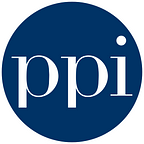Dealing with Zoom Fatigue: Using Project-Based Learning to End the School Year on a High Note
As schools wind down from a, hopefully, once-in-a-lifetime shutdown, many students and teachers find their motivation also winding down.
by Bruce Arao, Intern at the Progressive Policy Institute
As schools wind down from a, hopefully, once-in-a-lifetime shutdown, many students and teachers find their motivation also winding down. Educators are calling this “zoom fatigue,” referring to the commonly used teleconference platform. To end the year on a high note, teachers could turn to project-based learning (PBL), by asking students to complete a project they are interested in.
Motivation is the key to learning. “If the kids want to learn, you can’t stop ‘em,” former Ohio State professor of education Jack Frymier once said. “If they don’t, you can’t make ‘em.”
So urge students to work on something they care about. Education researchers have identified four main strategies to motivate students: focusing on learning students find relevant; giving them autonomy, or ownership of their learning; using positive feedback; and creating strong student-teacher relationships. So let students pick something they find relevant and give them some autonomy.
Jodi Chamberlin, a Tacoma, Washington, elementary school teacher, provides a good example. She selected projects “based on my students’ individual interests,” she wrote on DonorsChoose.org, a website where teachers can ask for donations for school projects. “I selected car building kits for my students who are interested in physics and mechanics of cars. I selected origami kits for a few of my kiddos who are always folding paper into various games during class time. I selected comic book templates for kids who are interested in being illustrators one day.”
Projects do not have to be physical. Some could be built online, through video games such as Minecraft, in which users enter a blocky, 3-D, computer-generated world in which the user has free reign to create any structure he or she can imagine using the tools built into the game. The first graphic shows a Minecraft world, while the second shows a suggested school project using Minecraft, from Fusion Yearbooks.
Irene Weinstein, a library media specialist at New Beginnings Family Academy in Bridgeport, CT, has used BreakoutEdu, an immersive learning games platform, to get her students excited about learning from home. “I have given students completely digital breakouts that I was able to access for free and the excitement and focus that I saw has been unmatched by any other activity,” she wrote on DonorsChoose.org. “However, there are only a handful of free lessons. With the access that this kit gives us, students can continue their thinking adventures throughout the year.”
Another teacher raised money to give students the material needed to build a terrarium at home, so they can grow plants and record their life cycles in a closed environment. Another raised funds for aquaponics sets, so students could grow their own vegetables.
Larry Berger, CEO of the curriculum and assessment firm Amplify, described a science project for older students from Amplify’s curriculum, in a recent interview. “Every kid participates in what we call an engineering internship for each unit,” he said. “They are on a fictional team at a science and engineering company. In the unit where we’re learning about changing climate, we’ve been tasked with designing rooftops for a city, and we are trying to use the science we’ve learned, but in an applied way, working with our team, designing rooftops, and we’ve set it up so most of the time, the really good idea that your team has fails for an interesting scientific reason and you’ve got to go back to the drawing board, like real engineers.”
Teachers could ask students who are passionate about sports to design the reopening of their favorite professional league. They could give students a series of questions they have to answer, such as how they would keep players and referees from exposure to the COVID-19 virus, whether any spectators would be allowed, how much television revenue each game would generate, whether the teams could make any profit this way, and if not, how the league would keep teams from going bankrupt. As they developed answers, teachers could continue to challenge them, poking holes in their reasoning and asking them to think more deeply.
Some teenage boys, who are disengaged in most classes, might love working on a project like this.
Through PBL, teachers serve as coaches and guides, giving inspiration and constructive feedback to help their students succeed. By posing increasingly demanding challenges and questions, they help students learn many different skills, from math and writing to critical thinking and digital publishing.
Students without computers or internet access could be put on teams with students who do have those resources. For individual assignments, teachers could either have the family photograph or record the student’s project and send it to the teacher or drop it off at a designated pick-up location.
At the end of the year, students and/or teams could showcase their work through an online show-and-tell. Every student or team would talk about their project, why they care about it, and what they were able to learn from it. This would help students develop the confidence to present in front of the class. For the students without internet, the teacher could present the project visually as the students discuss their work through a phone connection.
Whether it is origami animals, a Minecraft world, a terrarium, or an NBA restart, every student has something unique and noteworthy to contribute. Through these projects, students would be able to fuel their passions without ever leaving home.
And who knows, perhaps teachers would learn something they could use to motivate and engage their students in future years.
Bruce Arao, a spring 2020 intern at the Progressive Policy Institute, is a student at the University of California, Santa Barbara, double-majoring in economics and sociology.
